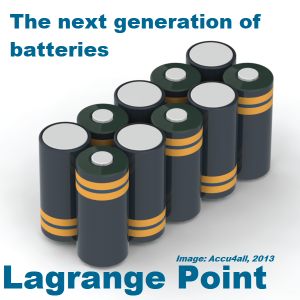
- Podcast Features
-
Monetization
-
Ads Marketplace
Join Ads Marketplace to earn through podcast sponsorships.
-
PodAds
Manage your ads with dynamic ad insertion capability.
-
Apple Podcasts Subscriptions Integration
Monetize with Apple Podcasts Subscriptions via Podbean.
-
Live Streaming
Earn rewards and recurring income from Fan Club membership.
-
Ads Marketplace
- Podbean App
-
Help and Support
-
Help Center
Get the answers and support you need.
-
Podbean Academy
Resources and guides to launch, grow, and monetize podcast.
-
Podbean Blog
Stay updated with the latest podcasting tips and trends.
-
What’s New
Check out our newest and recently released features!
-
Podcasting Smarter
Podcast interviews, best practices, and helpful tips.
-
Help Center
-
Popular Topics
-
How to Start a Podcast
The step-by-step guide to start your own podcast.
-
How to Start a Live Podcast
Create the best live podcast and engage your audience.
-
How to Monetize a Podcast
Tips on making the decision to monetize your podcast.
-
How to Promote Your Podcast
The best ways to get more eyes and ears on your podcast.
-
Podcast Advertising 101
Everything you need to know about podcast advertising.
-
Mobile Podcast Recording Guide
The ultimate guide to recording a podcast on your phone.
-
How to Use Group Recording
Steps to set up and use group recording in the Podbean app.
-
How to Start a Podcast
-
Podcasting
- Podcast Features
-
Monetization
-
Ads Marketplace
Join Ads Marketplace to earn through podcast sponsorships.
-
PodAds
Manage your ads with dynamic ad insertion capability.
-
Apple Podcasts Subscriptions Integration
Monetize with Apple Podcasts Subscriptions via Podbean.
-
Live Streaming
Earn rewards and recurring income from Fan Club membership.
-
Ads Marketplace
- Podbean App
- Advertisers
- Enterprise
- Pricing
-
Resources
-
Help and Support
-
Help Center
Get the answers and support you need.
-
Podbean Academy
Resources and guides to launch, grow, and monetize podcast.
-
Podbean Blog
Stay updated with the latest podcasting tips and trends.
-
What’s New
Check out our newest and recently released features!
-
Podcasting Smarter
Podcast interviews, best practices, and helpful tips.
-
Help Center
-
Popular Topics
-
How to Start a Podcast
The step-by-step guide to start your own podcast.
-
How to Start a Live Podcast
Create the best live podcast and engage your audience.
-
How to Monetize a Podcast
Tips on making the decision to monetize your podcast.
-
How to Promote Your Podcast
The best ways to get more eyes and ears on your podcast.
-
Podcast Advertising 101
Everything you need to know about podcast advertising.
-
Mobile Podcast Recording Guide
The ultimate guide to recording a podcast on your phone.
-
How to Use Group Recording
Steps to set up and use group recording in the Podbean app.
-
How to Start a Podcast
-
Help and Support
- Discover

We launch from the Nobel Prize for Chemistry 2019 into current battery research and development. Creating the ubiquitous Lithium Ion battery took decades of collaborative research across the globe. How are scientists working together today to make the new generation of batteries? Can we improve LI batteries with new electrolyte mixes? How can we use Silicon instead of graphite in our batteries to give them a boost? Is it possible to make an organic recyclable battery? How can we use proteins and peptides to make organic batteries? Can we make batteries without damaging the environment?
References:
- Nobel Foundation. (2019, October 9). Nobel Prize in Chemistry 2019: Lithium-ion batteries. ScienceDaily. Retrieved October 11, 2019 from www.sciencedaily.com/releases/2019/10/191009082508.htm
- Binghong Han, Chen Liao, Fulya Dogan, Stephen E. Trask, Saul H. Lapidus, John T. Vaughey, Baris Key. Using Mixed Salt Electrolytes to Stabilize Silicon Anodes for Lithium-Ion Batteries via in Situ Formation of Li–M–Si Ternaries (M = Mg, Zn, Al, Ca). ACS Applied Materials & Interfaces, 2019; 11 (33): 29780 DOI: 10.1021/acsami.9b07270
- American Chemical Society. (2019, August 26). Producing protein batteries for safer, environmentally friendly power storage. ScienceDaily. Retrieved October 12, 2019 from www.sciencedaily.com/releases/2019/08/190826092322.htm5
More Episodes
 2023-10-22
2023-10-22
 32
32
 2023-09-11
2023-09-11
 25
25
 2023-09-01
2023-09-01
 26
26
 2023-08-11
2023-08-11
 25
25
 2023-07-31
2023-07-31
 26
26
 2023-07-24
2023-07-24
 26
26
 2023-07-10
2023-07-10
 24
24
 2023-07-03
2023-07-03
 32
32
 2023-06-30
2023-06-30
 23
23
 2023-06-20
2023-06-20
 25
25
 2023-05-30
2023-05-30
 25
25
Create your
podcast in
minutes
- Full-featured podcast site
- Unlimited storage and bandwidth
- Comprehensive podcast stats
- Distribute to Apple Podcasts, Spotify, and more
- Make money with your podcast
It is Free
- Privacy Policy
- Cookie Policy
- Terms of Use
- Consent Preferences
- Copyright © 2015-2025 Podbean.com




